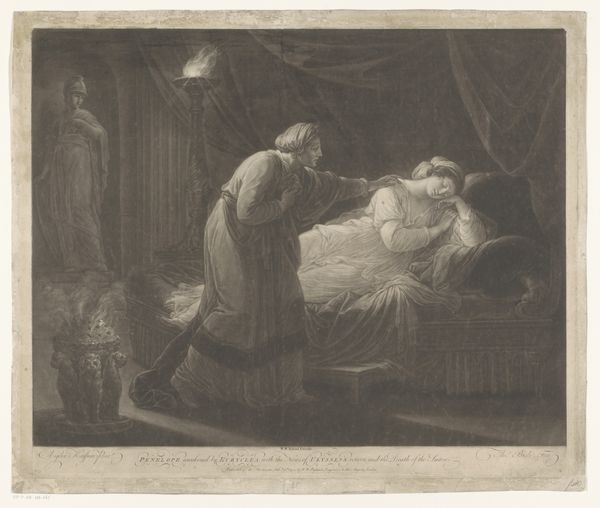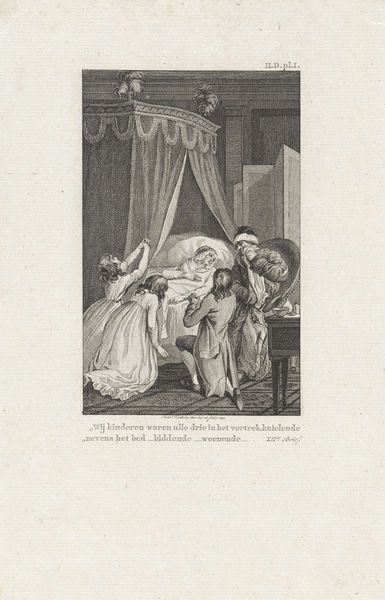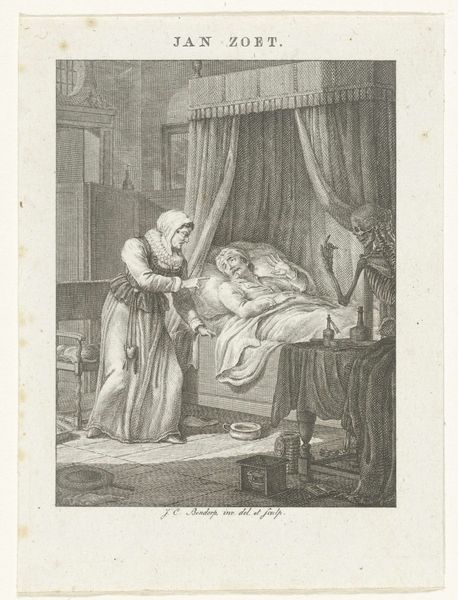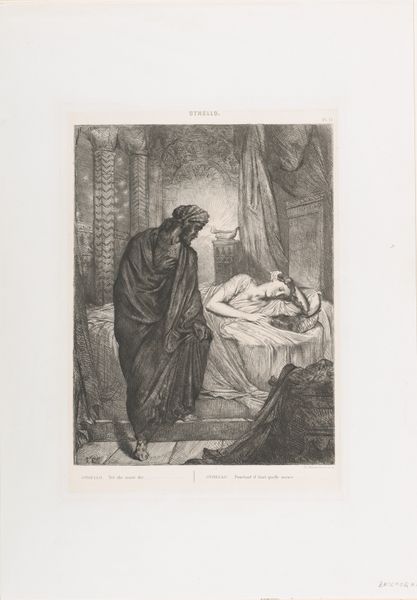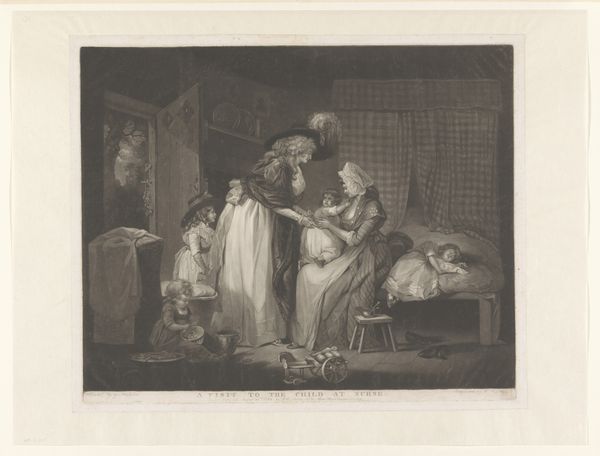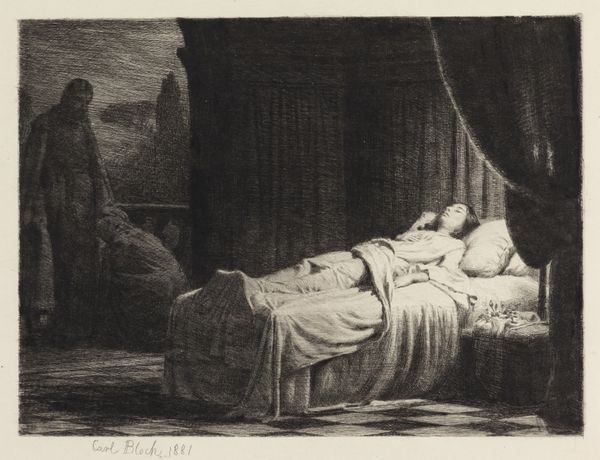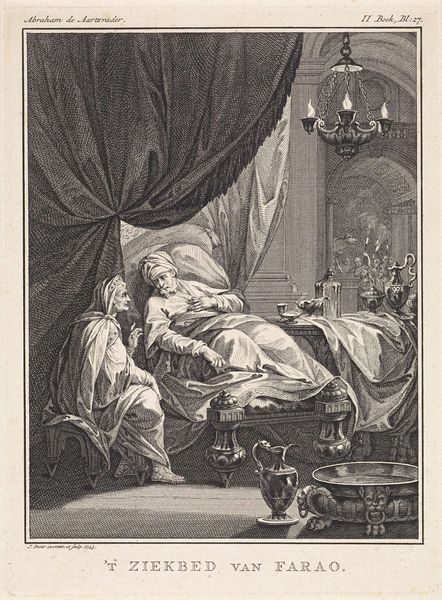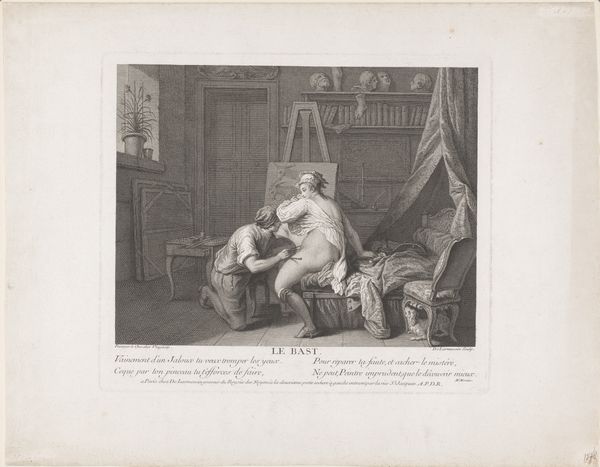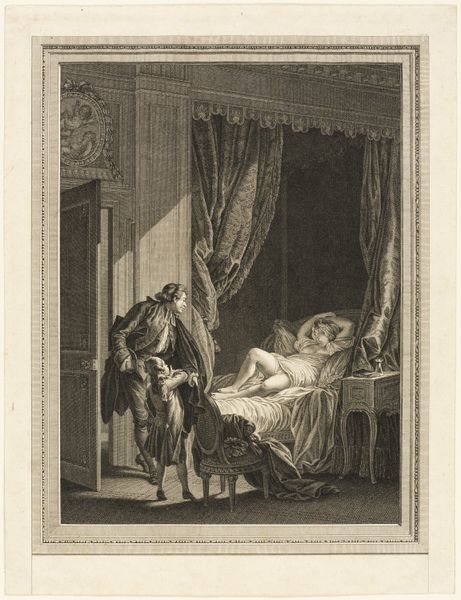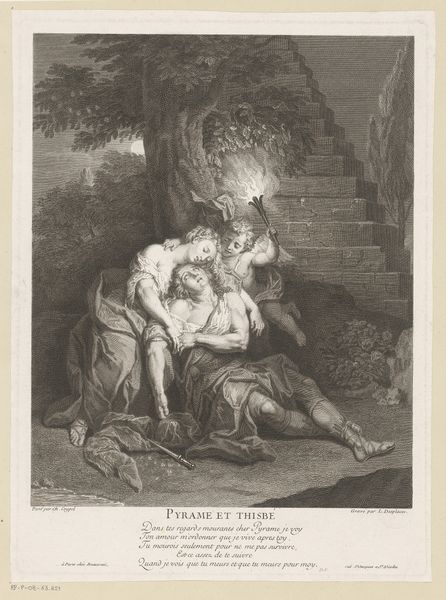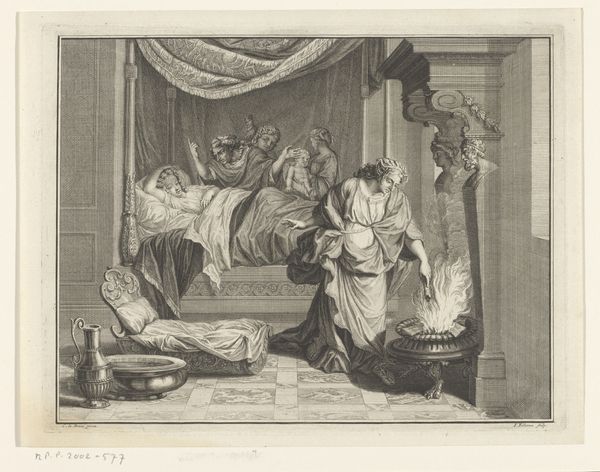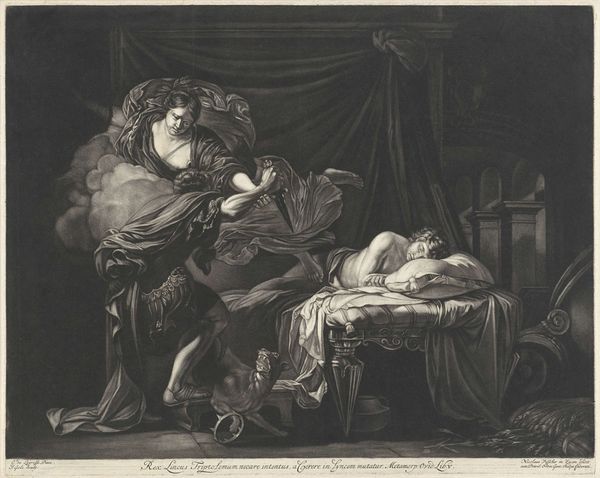
Dimensions: sheet: 16 7/16 x 19 5/16 in. (41.8 x 49 cm) image: 14 1/2 x 17 11/16 in. (36.8 x 45 cm)
Copyright: Public Domain
Editor: This is "Le Verrou," or "The Bolt," a drawing and print by Jean-Honoré Fragonard, sometime between 1765 and 1818. It’s…intense! The figures are so entwined, and the drama is heightened by the implied struggle. What is your interpretation of this work? Curator: This piece exemplifies the Rococo style's emphasis on sensuality, but through a distinctly gendered lens. The woman’s resistance, though visually present, can be interpreted within the historical context of female agency – or the lack thereof – during the 18th century. Does the 'bolt' represent control, both literally and metaphorically, do you think? Editor: That's a great point. The bolt seems to represent the man’s forceful actions but the woman also seems complicit. How would you describe Fragonard’s stance on the concept of consent based on the drawing? Curator: It’s less about determining Fragonard’s personal views, and more about using the artwork as a lens to examine broader societal attitudes towards consent and power dynamics. The artwork is not a simple celebration of love; it’s a complicated representation of desire and control, and should be viewed within this historical frame, as well as considering contemporary gender dynamics. What emotions are evoked by viewing this today, compared to when it was first created? Editor: That makes so much sense. It's definitely thought-provoking, especially thinking about how interpretations of erotic art change so dramatically over time. I appreciate the historical perspective, that helps frame my own contemporary analysis of gender dynamics. Curator: Absolutely. Art, especially pieces like this, provides valuable insight into cultural values across eras.
Comments
No comments
Be the first to comment and join the conversation on the ultimate creative platform.
